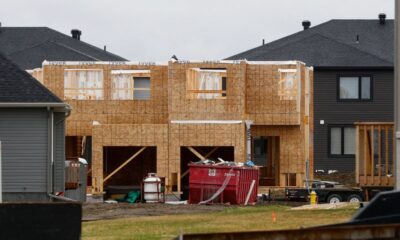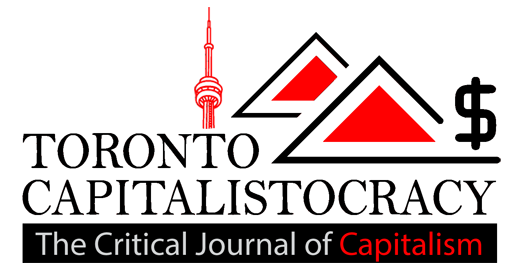Business
Faraday Future Unveils Tesla-beating Electric car: the FF91

Faraday Future staked its claim to the world’s fastest electric car with its FF91 production model, showing footage of it outracing Tesla Motors Inc.’s Model S in a glitzy event in Las Vegas.
The startup electric-car maker backed by Chinese billionaire Jia Yueting is counting on its debut offering to drum up support from investors, many of whom had been invited to the Las Vegas presentation. The FF91 can go from zero to 60 miles per hour (96 kilometres per hour) in 2.39 seconds, according to the company. That compares with 2.5 seconds for Tesla’s Model S P100D in its fastest ‘Ludicrous’ mode.
The 1,050-horsepower FF91 can travel in excess of 378 miles (608 kilometres) of adjusted EPA range, “enough to travel from LA to Silicon Valley with miles to spare,” Peter Savagian, Faraday Future’s vice president of propulsion engineering, said in the presentation. The car will also feature a personalized interface for every passenger and be able to find available parking space on its own.
“We are not just building a vehicle but a globally shared internet mobility ecosystem,” said Jia, who’s also the founder of tech company LeEco. “I’m willing to devote everything to my dream. Even my life.”
Jia is working to salvage a tech-focused empire that touches everything from smartphones and electric cars to organic food and movie productions. Leshi Internet Information & Technology Co., the Chinese video-streaming service also backed by Jia, said it’s in talks to raise more than 10 billion yuan ($1.4 billion U.S.) from a group of undisclosed strategic investors.
The LeEco group has reiterated that it won’t give up on its electric car dreams despite restructuring at a subsidiary due to cash flow problems.

Jia has invested more than $300 million (U.S.) of his own money in Faraday, said Winston Cheng, a former Bank of America Corp. investment banker who now runs corporate finance for the LeEco group’s companies.
Faraday Future is one of three electric car ventures Jia has invested in. He set up LeCar in 2014 and the company aims to manufacture its first car this year.
LeEco is also one of the investors in Lucid Motors Inc., which was earlier known as Atieva and was established in 2007 to make battery packs for electric buses in China. In November, Lucid said it has selected Arizona as the home for a $700-million (U.S.) facility that will manufacture luxury cars.
In December, Jia reassured investors that LeEco’s fundraising plans were going smoothly and it wasn’t planning to give up on its supercar dream. The company broke ground on its car plant in eastern China’s Zhejiang province on Dec. 28 and reiterated its commitment of investing about 11 billion yuan for the initial phase of construction.
Recent measures by China to tighten controls on currency outflows has affected his ability to invest overseas, Jia said on the sidelines of the Las Vegas event.
The FF91 can be reserved for $5,000 (U.S.) and first deliveries will take place in 2018, according to the company, which didn’t reveal the final retail price. Faraday Future’s plant in Nevada will start production this year and the company will be able to pay its suppliers, said Nick Sampson, the carmaker’s research and development chief.
Company officials laid out the Faraday Future vision at the presentation, vowing to “reformat the future of mobility” that will make pollution, congestion and traffic accidents obsolete.
The company is working to create a “new species” that will “truly change the game,” Sampson said.
“It’s very impressive,” Christoph Stuermer, an automotive analyst at PricewaterhouseCoopers, said of the presentation. “My question is, how are they going to make money?”
Faraday Future acknowledged the skepticism surrounding the company’s efforts. “Despite all the naysayers and the skeptics, we will persist,” Sampson said.
One such glitch was on prominent display during the event. The driverless valet function that the company touted as solving the headache of finding parking space failed to engage on stage when Jia was invited to activate it, prompting Sampson to say that the car “was a little bashful” and “as a new baby she is often very, very timid.”
He later explained that the building’s steel structure inhibited some of the signals that the car needed to drive itself. The company did an outdoors demonstration via video link earlier in the presentation that showed the FF91 seeking out an empty lot and reversing into it.
“We will carry on to make the impossible possible,” Sampson said.
Business
Beauty Week is back at Hudson’s Bay in Toronto and it’s time to get glam

Beauty enthusiasts rejoice! Beauty Week at Hudson’s Bay is back in Toronto for another year. It’s time to stock up on all of your fall essentials and, maybe discover some new ones.
From Friday, August 18 to Sunday, August 27, you can expect a truly elevated beauty experience in-store with incredible special offers, limited-time gifts, and exciting activations.
If you’re a diehard beauty lover, you’ll already know that Hudson’s Bay is the place to shop thanks to its extensive range of over 195 skin and makeup brands from both luxury labels and masstige brands — including Tata Harper, Estée Lauder, YSL, Nars Cosmetics, Bobbi Brown, and so much more.
Throughout The Bay’s Beauty Week, visitors can take in some at-counter activations and interactive expert-led tutorials, where there will be chances to get makeup touch-ups from top-tier brands, try a spritz of the most alluring fragrances, and sample tons of new products.
This year’s Beauty Week highlight is the ‘Best in Beauty’ tote, a meticulously-curated selection of 30 deluxe samples from an array of top-tier brands like Dr. Barbara Sturm and Shiseido spanning skincare, fragrance, and makeup — all in a super sleek bag.
The tote, which is valued at over $300, is retailing for just $39 and is a fantastic way to explore new products (without breaking the bank). However, there is a limited quantity, so if you want to get your hands on one, you’ll need to be fast.
Wondering exactly what Beauty Week’s free gifts with purchases entail? If you spend over $95 at Lancôme, you will receive a six-piece set valued at $130. Or, you can get an Estée Lauder gift valued at $170 with purchases over $80. (And that’s just to name a few.)
If you’re a Hudson’s Bay Rewards member, you’ll also get $20 in Hudson’s Bay rewards when you spend over $100 on beauty.

Business
The Canadian Armed Forces are hiring for several non-combat military jobs

The Canadian Armed Forces (CAF) have several non-combat jobs, some of which do not require a college degree or past work experience.
Life in the forces has several benefits, such as paid education plans (college, university and graduate-level programs), 20 paid vacation days, health and dental coverage for you and your family, maternity and paternal leave, and pension plans. You can learn more about the benefits in detail here.
And to make it easier to gauge if you qualify, the listings also include related civilian jobs to see if it’s your ideal role.
Financial services administrator
Related civilian jobs: Financial records entry clerk, financial manager, accounting technician, bookkeeper, budget officer, cashier clerk, business planner technician, and verification manager.
Description: You’ll help budget resources for all military activities besides providing financial assistance.
Education: You need to have completed Grade 10.
Duties: As a financial services administrator, you’ll be responsible for bookkeeping and managing budgets. You’ll also provide support in accounts payable and accounts receivable.
Work environment: Those in this role work at CAF bases, on ships or overseas. You might also be expected to help special operation units, recruiting offices, schools, and medical organizations.
Postal clerk
Related civilian jobs: Mail clerk, mail sorter.
Description: You’ll provide postal services to members and their families at bases and establishments.
Education: Grade 10. No previous work experience or related career skills are required.
Duties: As the postal clerk, you’ll handle mail duties.
Work environment: Besides a postal office, you may work on a ship or a mobile postal van. You might be expected to serve with Royal Canadian Navy, the Army, and the Royal Canadian Air Force in Canada and abroad.
Dental technician
Related civilian jobs: Dental assistant, dental hygienist.
Description: You’ll be helping dental officers provide dental services to CAF members, their families, and dependents.
Education: Level II dental assisting diploma from an accredited college or a National Dental Assisting Examining Board (NDAEB) certificate.
Duties: Those in this role will be responsible for various responsibilities, including disinfection and sterilization of dental equipment, applying rubber dams, placing cavity liners, and controlling bleeding. In addition, you’ll assist in laboratory procedures like creating casts, custom trays, and mouthguards.
Work environment: This role will require you to work in a military dental clinic, a Mobile Dental Clinic, an Air Transportable Dental System, or onboard a ship. You might be expected to work on a base in Canada or other operations in other parts of the world.
Human resources administrator
Related civilian jobs: Records administrator, data entry supervisor, receptionist, office manager, executive assistant, payroll clerk, and information management technician.
Description: Provide administrative and general human resources support.
Education: Grade 10. No previous work experience or related career skills are required.
Duties: In addition to human resources administration and services, you’ll be handling pay and allowances, managing automated pay systems, and maintaining personnel records.
Work environment: HR administrators work at all CAF bases in Canada. They also work on ships and overseas to support the Canadian Army, Royal Canadian Navy, or Royal Canadian Air Force operations.
Medical assistant
Related civilian jobs: Emergency medical responder, ambulance and first aid attendant, registered nursing assistant, licensed practical nurse, and hospital orderly.
Description: Successful candidates will help treat the sick and injured in CAF units. You’ll be assisting and supporting nursing and medical officers.
Education: Minimum of Grade 11 biology, Grade 10 physics or chemistry, and Grade 10 math.
Duties: You’ll provide initial care and essential life support treatments in trauma cases. You’ll help with health assessments (hearing and vision tests, perform basic lab procedures, etc.) and initiate and manage medical records and reports. You’ll also be expected to provide support and first aid during training exercises.
Work environment: Medical assistants may serve with the Royal Canadian Navy, the Royal Canadian Air Force or the Canadian Army as part of the Canadian Forces Health Services Group. Those in this role are exposed to the same risks as the forces they support.

Business
Porter’s new loyalty program promises to match Air Canada’s Aeroplan status

Porter Airlines is once again stirring the pot among Canadian airline rivals, now going after Air Canada’s Aeroplan members by offering to match their loyalty status to an equivalent of their own.
The beloved airline, which recently ranked as having the best cabin service in North America, challenged the competition for the second time this year, after previously deploying a similar tactic against WestJet in the spring.
Earlier in April, Porter presented customers with a limited-time offer to match the loyalty status of WestJet’s patrons with VIPorter levels.
Now, they’re offering Aeroplan members to seamlessly transition to an equivalent VIPorter Avid Traveller status based on their existing membership tier.
Members can then take advantage of an array of travel perks that come with flying Porter, including seat selection, baggage, and flight changes.
For those currently holding an Aeroplan membership, there are two ways to acquire the Avid Traveller status for the rest of 2023:
Status-Based Match:
- Aeroplan 25K members = VIPorter Venture
- Aeroplan 35K members = VIPorter Ascent
- Aeroplan 50K, 75K, and Super Elite = VIPorter First
Flight Segments-Based Match:
- 5 flight segments = VIPorter Passport
- 8 segments = VIPorter Venture
- 17 segments = VIPorter Ascent
- 28 or more segments = VIPorter First
Members will have to first submit their applications on Porter’s website. Registration will remain open until September 6, 2023.
In order to maintain their membership level through 2024, customers will have until the end of 2023 to reach the following reduced qualifying spend (QS) targets:
- Passport = $500 in QS
- Venture = $750 in QS
- Ascent = $1500 in QS
- First = $2500 in QS
Over the past year, Porter has launched an aggressive expansion strategy, including everything from introducing longer flights on newly-purchased jet planes flying out of Toronto Pearson, free WiFi, and a new all-inclusive economy experience.
With Canadians losing both Swoop and Sunwing as WestJet incorporates both into their mainline business, Porter’s direct competition is welcome to keep prices competitive.

-

 Lifestyle8 months ago
Lifestyle8 months agoOntario Line subway construction permanently shuts down beloved Toronto bakery
-

 Business8 months ago
Business8 months agoThe Canadian Armed Forces are hiring for several non-combat military jobs
-

 Business8 months ago
Business8 months agoPorter’s new loyalty program promises to match Air Canada’s Aeroplan status
-

 Business8 months ago
Business8 months agoPeople call out Sobeys for ridiculous prices after another expensive find at Ontario store
-

 Business8 months ago
Business8 months ago‘Here, everything feels much closer’: Entrepreneur says leaving Toronto for Innisfil good for business
-

 Lifestyle8 months ago
Lifestyle8 months agoWoman crashes car and runs around highway with bottle of booze on typical day in Toronto
-

 Lifestyle8 months ago
Lifestyle8 months agoCanada considers capping international student visas to address housing crisis
-

 Business8 months ago
Business8 months agoBeauty Week is back at Hudson’s Bay in Toronto and it’s time to get glam



